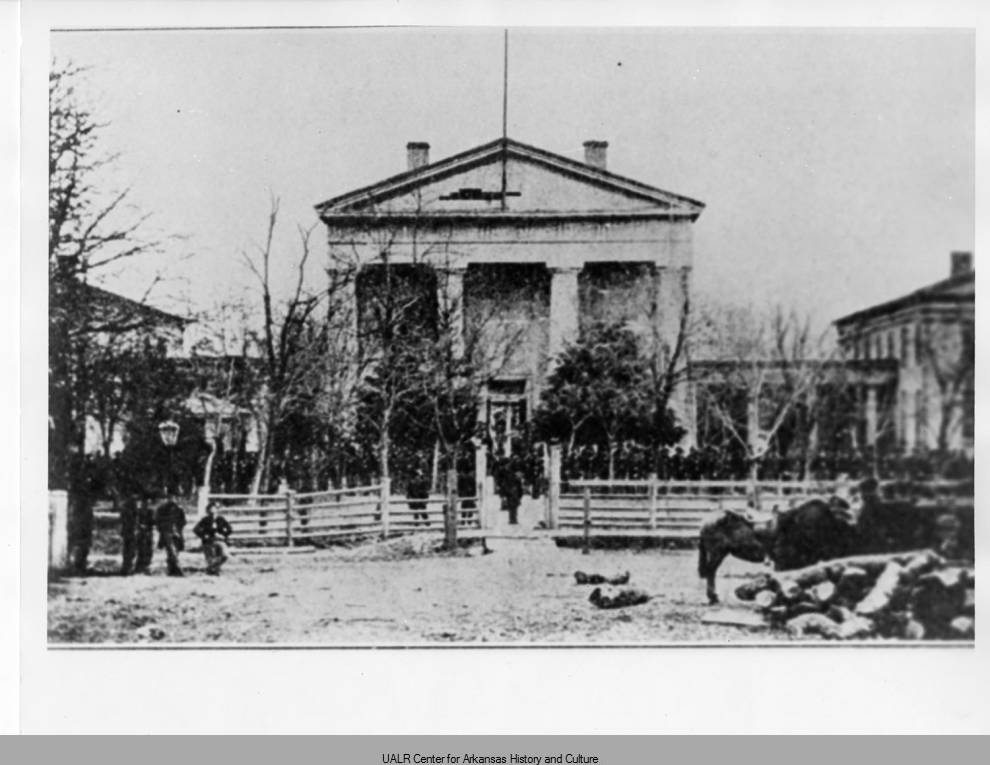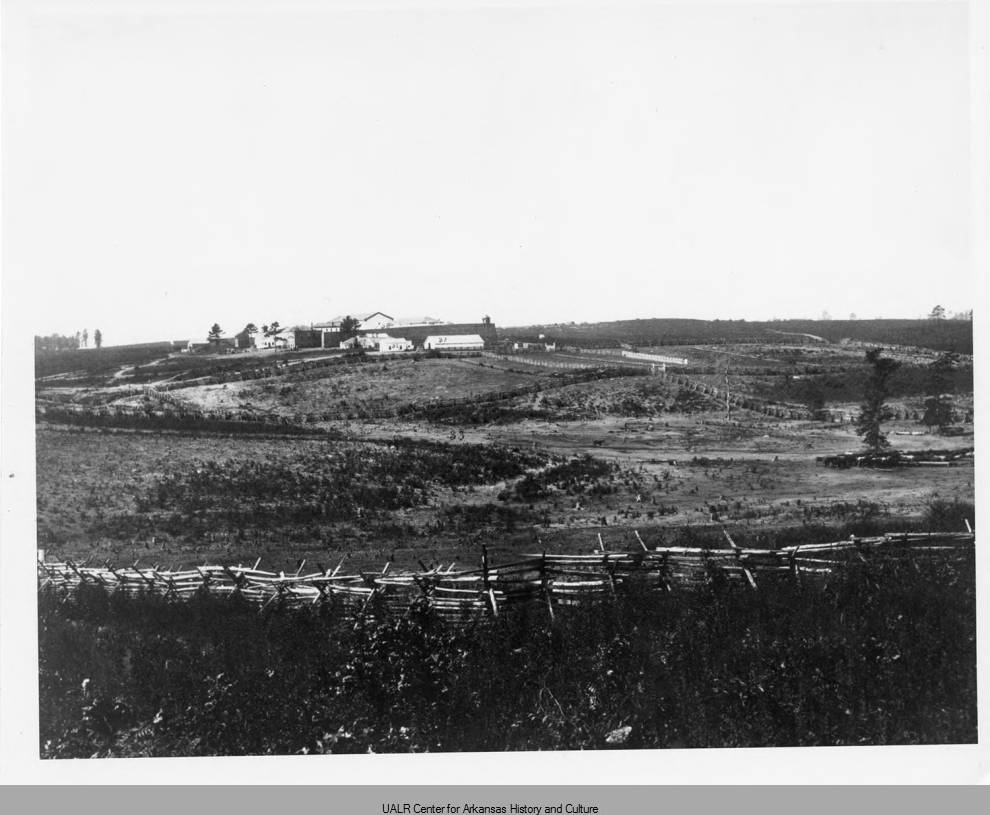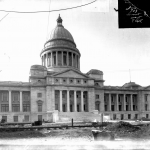Welcome to our new series, Retro Rock. We take you back in time to look at the history behind some of Little Rock’s most iconic places and hidden treasures.
There is no mistaken the Arkansas State Capitol as you make your way through downtown. Situated at the western edge of the downtown area, it maintains high visibility thanks in part to the distance from most tall buildings. For this Retro Rock we take a look at the building of the Arkansas Capitol.

The current State Capitol building is not the first for Little Rock. Shortly after the capital of Arkansas moved from Arkansas Post to Little Rock in 1821 Governor John Pope commissioned the building of what is now the Old State House. Construction on the State House lasted from 1833 to 1842 and first housed the General Assembly in 1837 while it was still under construction. The State House still stands today as a museum although it has been used recently for a special session of the House of Representatives.

The land that now holds the current State Capitol building was previously the was the state penitentiary. Initially the spot was deemed “too valuable” to host the capitol building. After issues with plaster falling from the ceiling on the senate chamber and state budget surpluses the new capitol was signed into law in 1899 with a cost not to exceed one million dollars.
Construction started in July 1899 and utilized labor from 200 inmates held at the state penitentiary it was replacing to help offset construction costs.
The building was originally designed by George Mann who also designed the St. Louis City Hall and the capitol buildings for Washington, Minnesota, and Montana. He also designed several other Arkansas buildings including the Blass Building, the Gazette building, and an addition to the Pulaski County Courthouse along with a number of buildings outside of Little Rock.
Construction began to slow in 1901 and grinded to nearly a halt in 1905 after the project was accused of taking shortcuts in constructions. Later a number of state legislators were indicted for accepting bribes connected with construction appropriations and one, Sen. Frank Butt, was convicted. Construction progress finally did stall in 1907.
The gubernatorial race in 1908 brought new life to the project. The race was won comfortably by former Capitol Commissioner George Donaghey who dismissed the previous contractor who was providing bribes and took possession of the building. He brought in a new architect Cass Gilbert who also worked on the Minnesota capitol as well as the Woolworth building in New York City.
Gilbert made a number of changes to the original design including major changes to the capitol dome and simplifying the exterior.

In December 1910 the building was still unfinished, but declared ready for occupation. The general assembly met for the first time in January 9 despite the fact that much of it was unfinished. The building had no permanent heat and lighting and most of the interior was still in plaster. Work slowed that year when the legislators, who were ironically meeting in the unfinished capitol, failed to authorized adequate money for the project. Funding was put back on track in 1913 and work resumed normal speed.
The building was deemed complete on January 1915, over 15 years from the original start date. The final cost was $2.2 million, more than the original $1 million allocated to the building. Few changes have come to the exterior of the building itself since the 1915 completion, although the interior has been remodeled several times.
Big thanks to the Butler Center for Arkansas Studies for historic photos and the Encyclopedia of Arkansas for background information.










